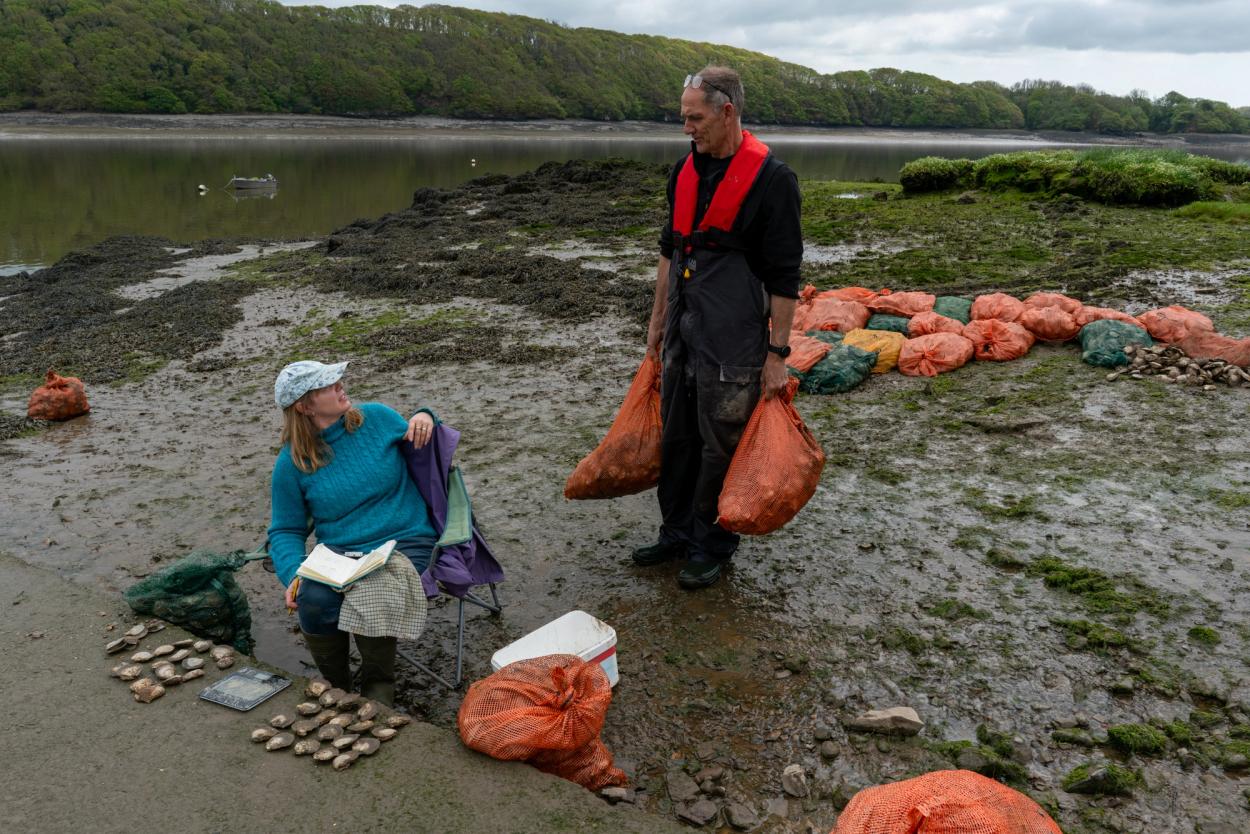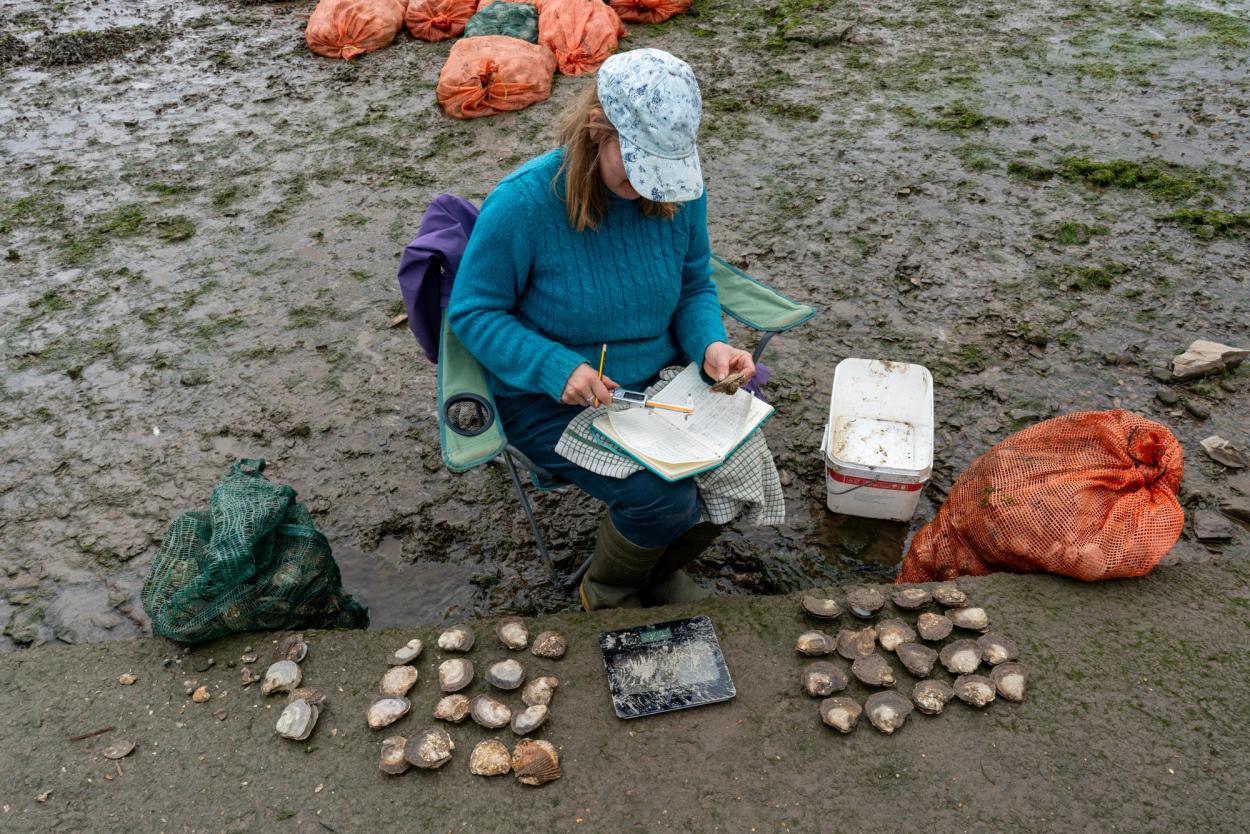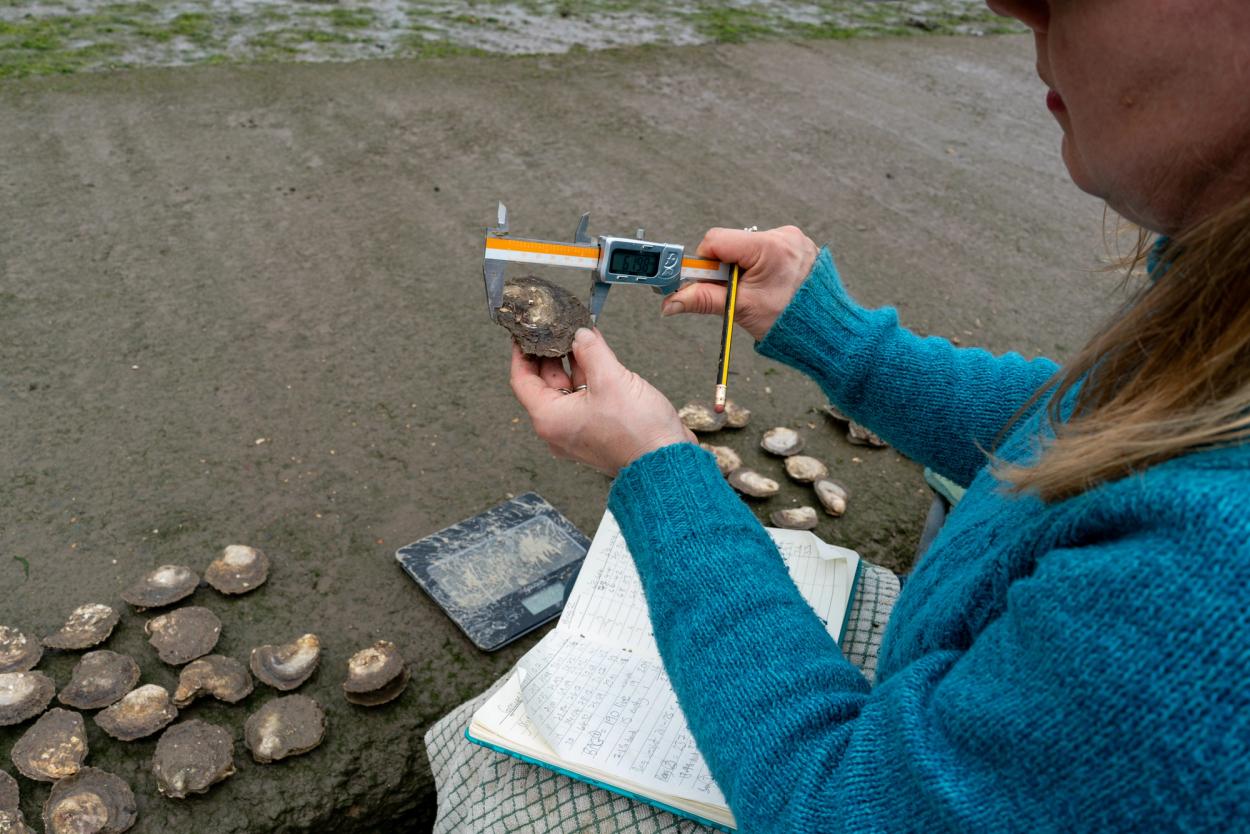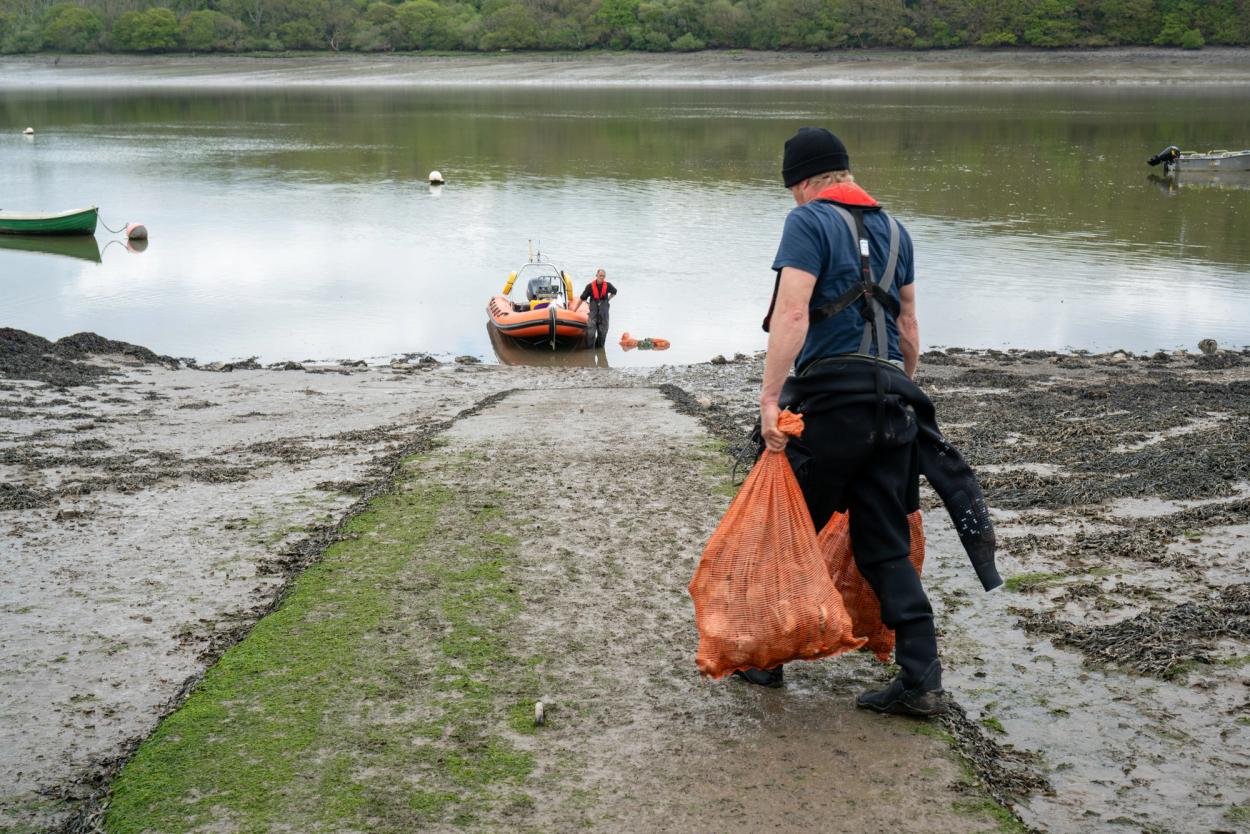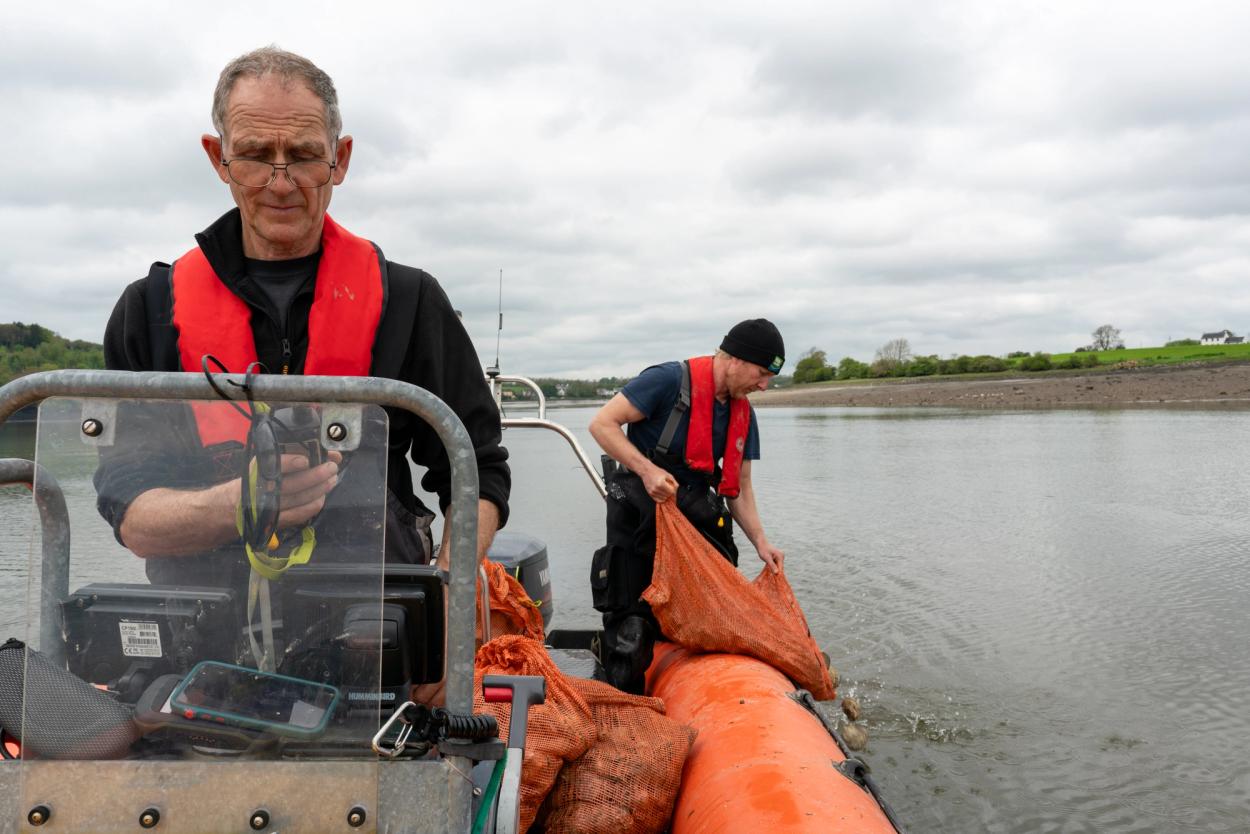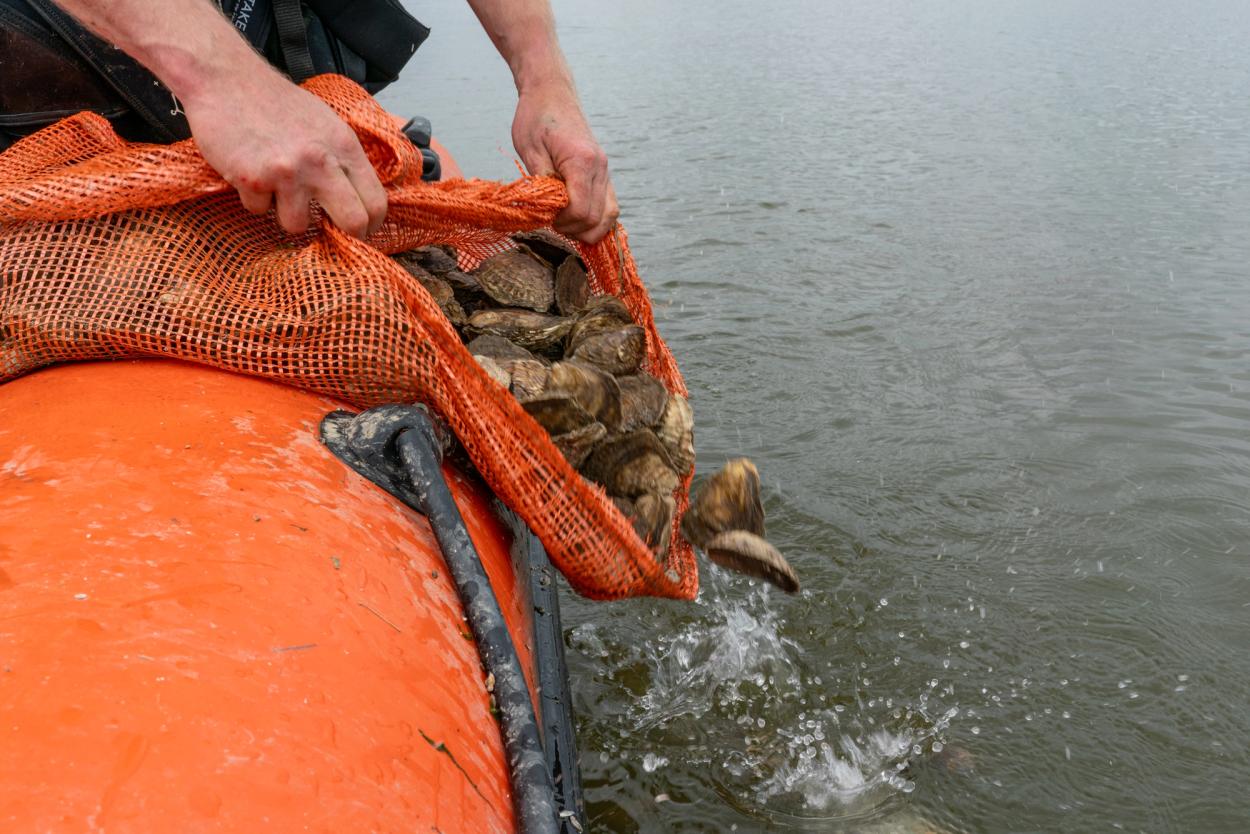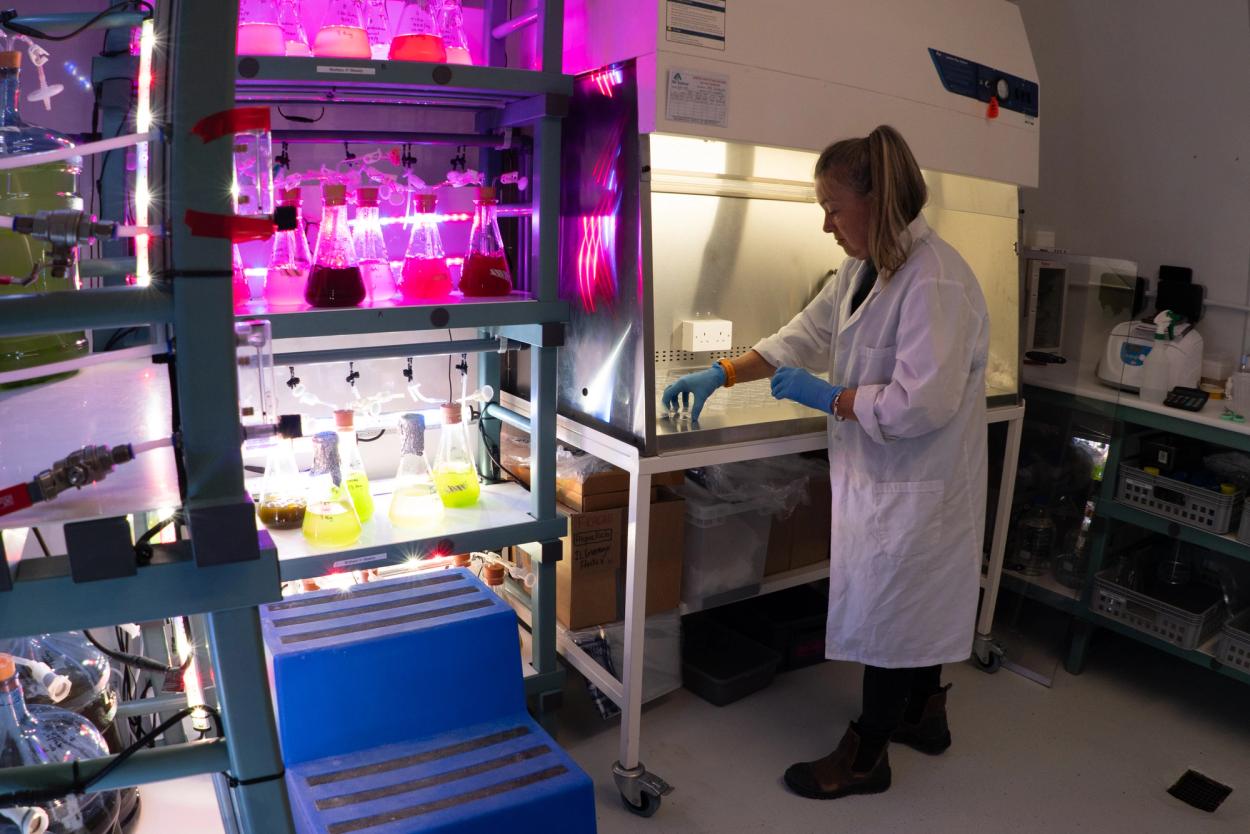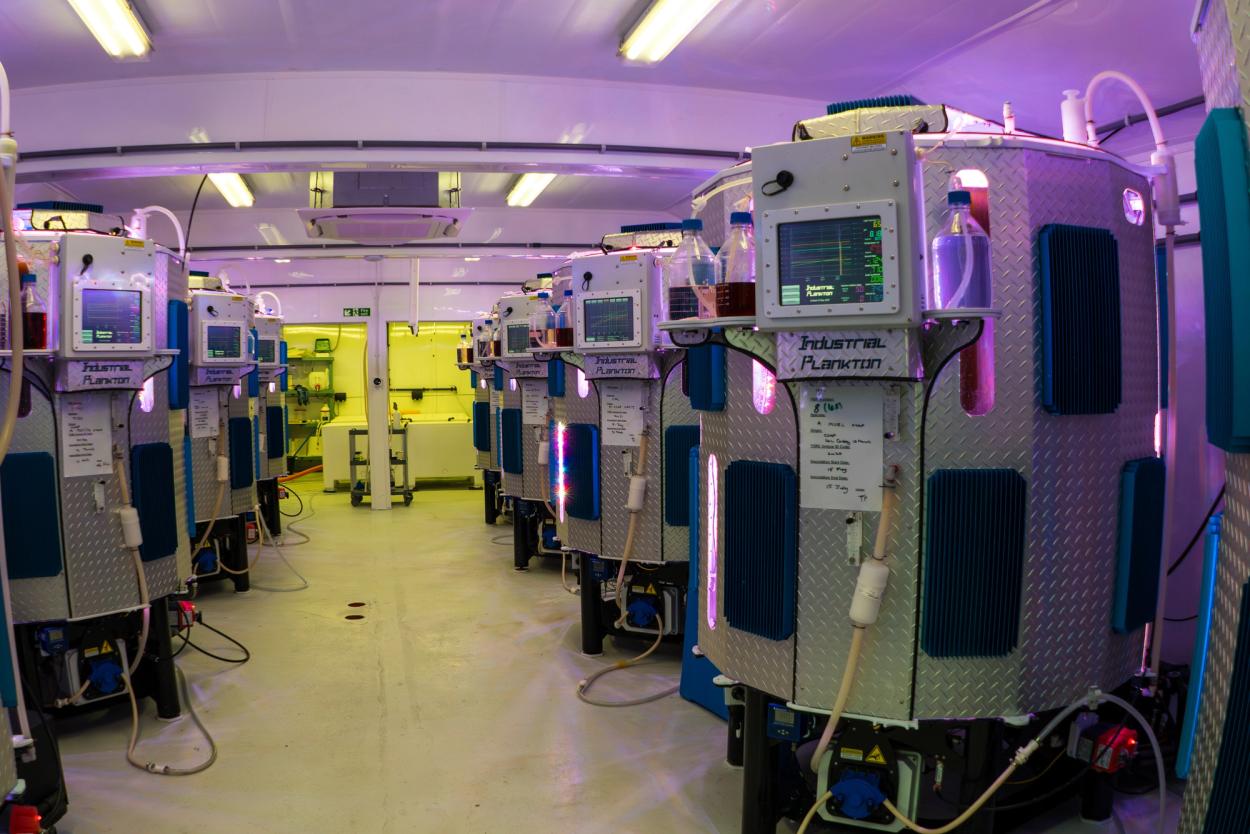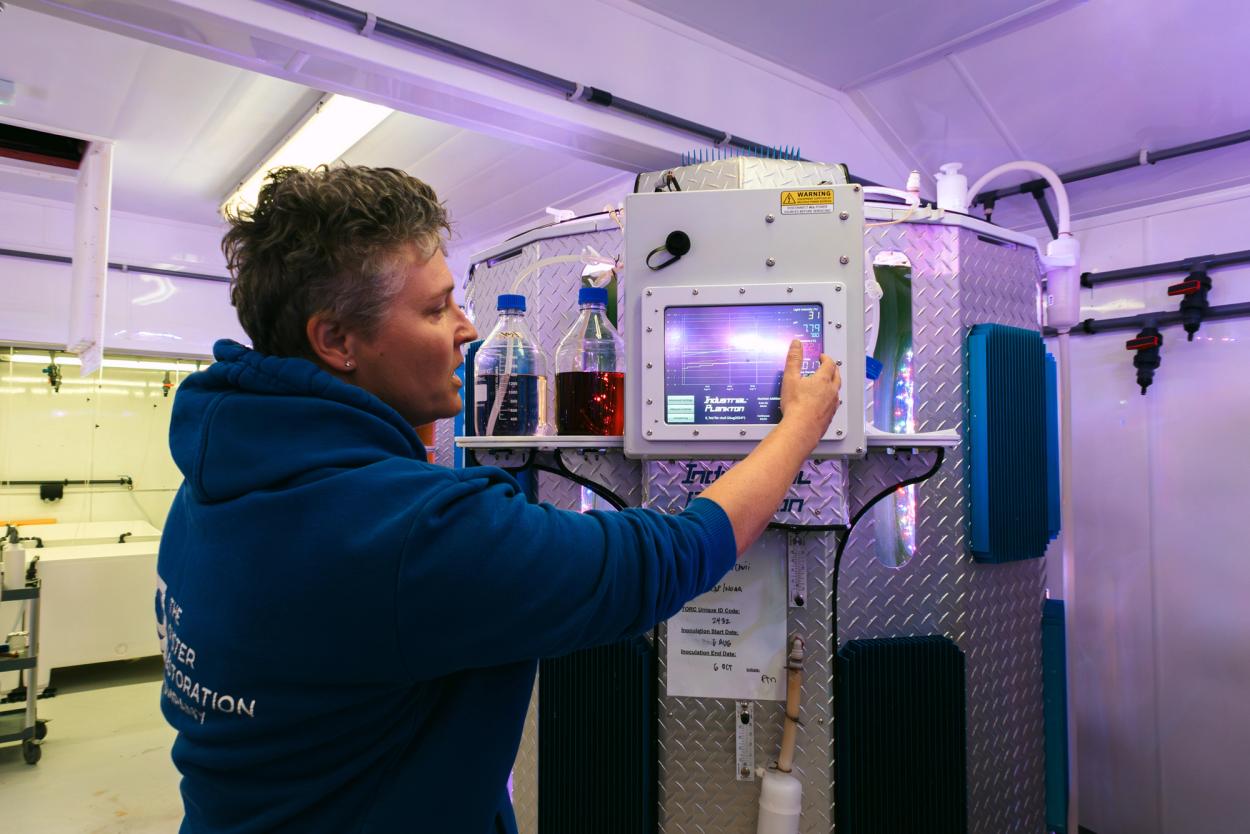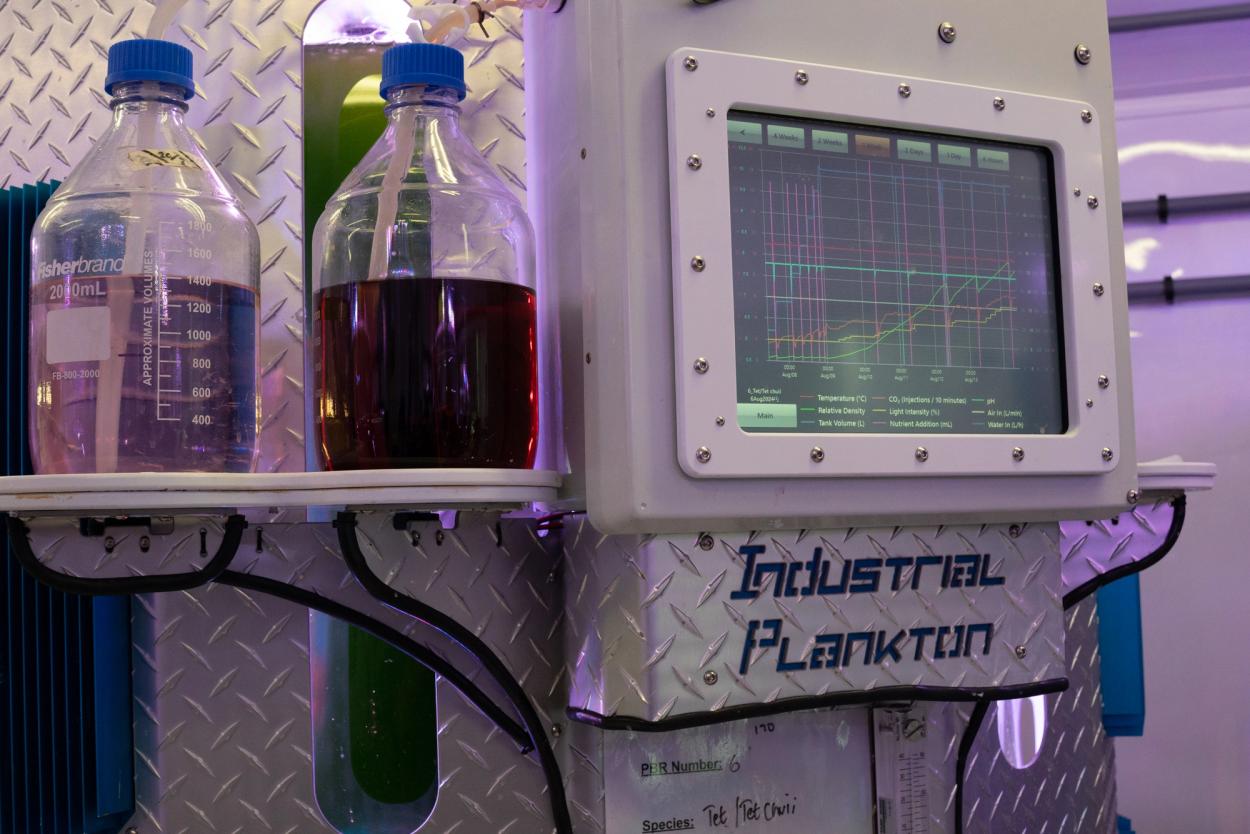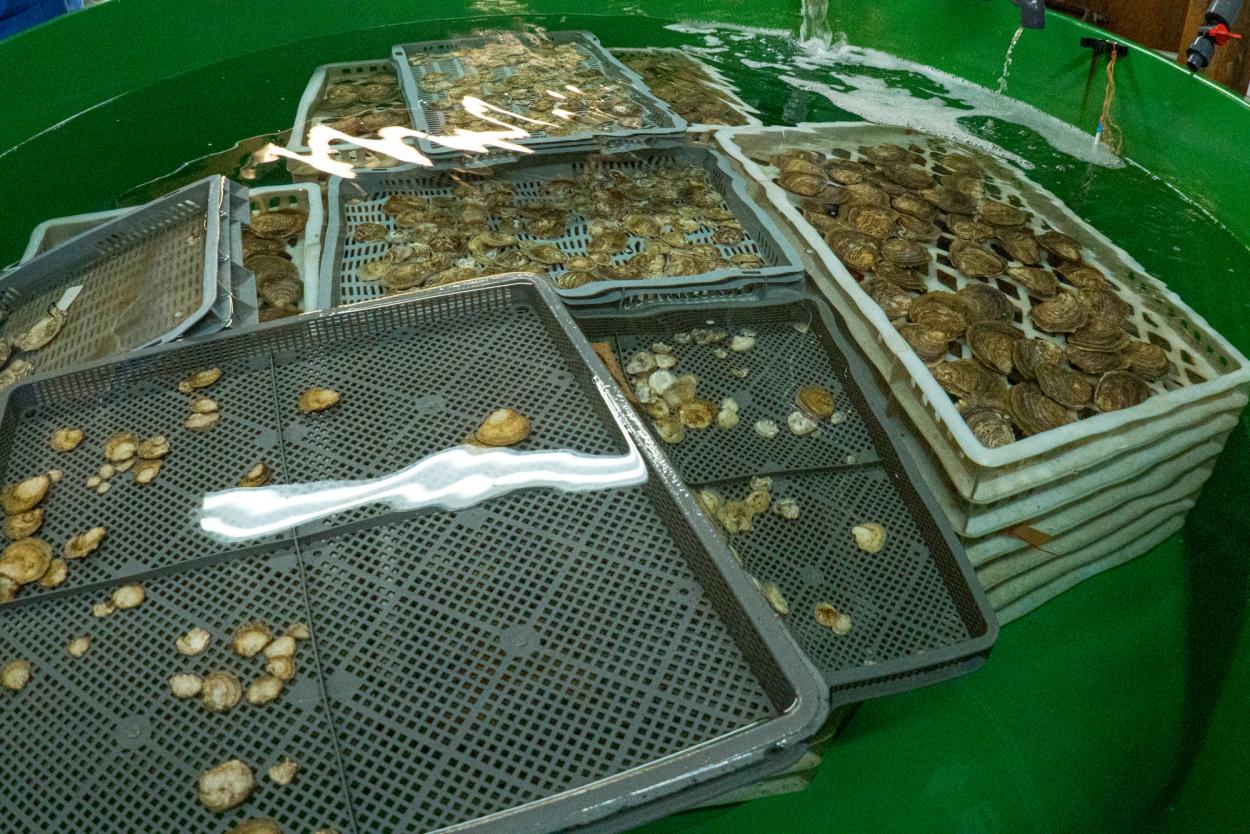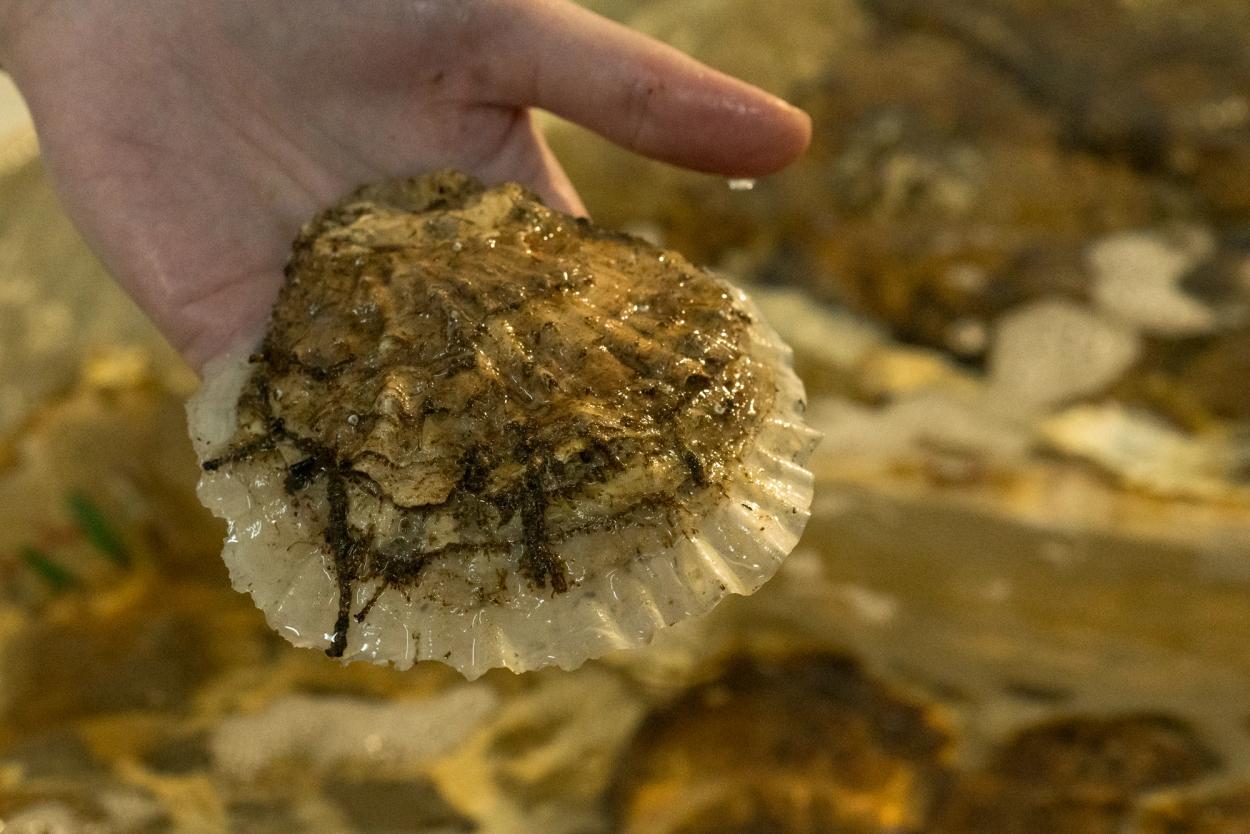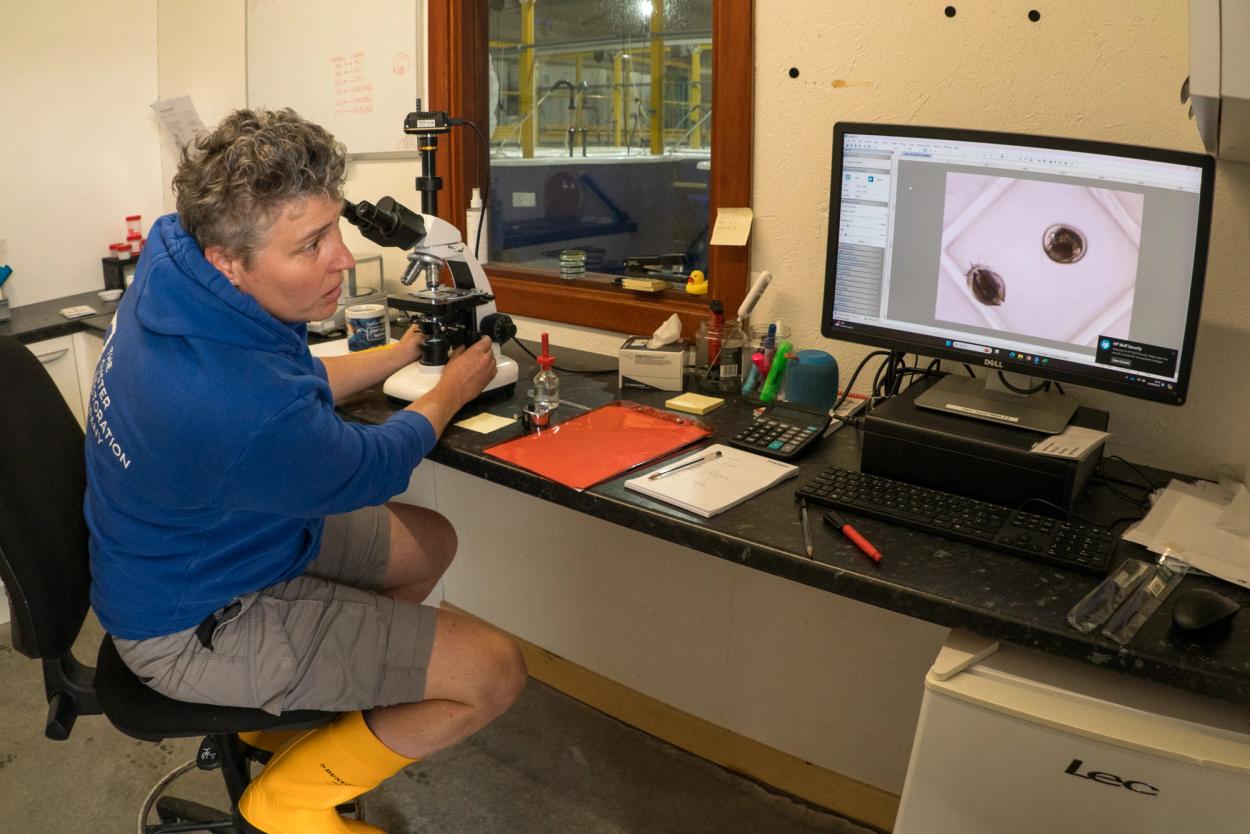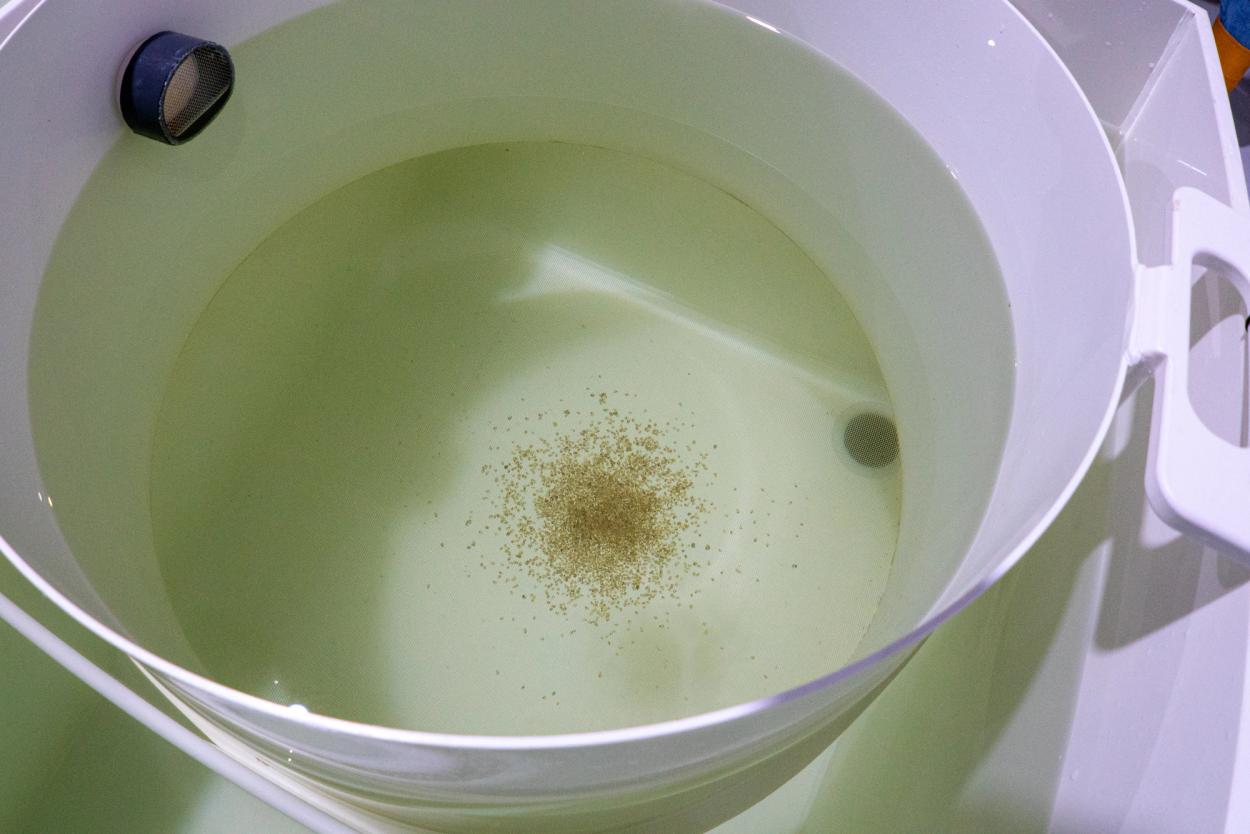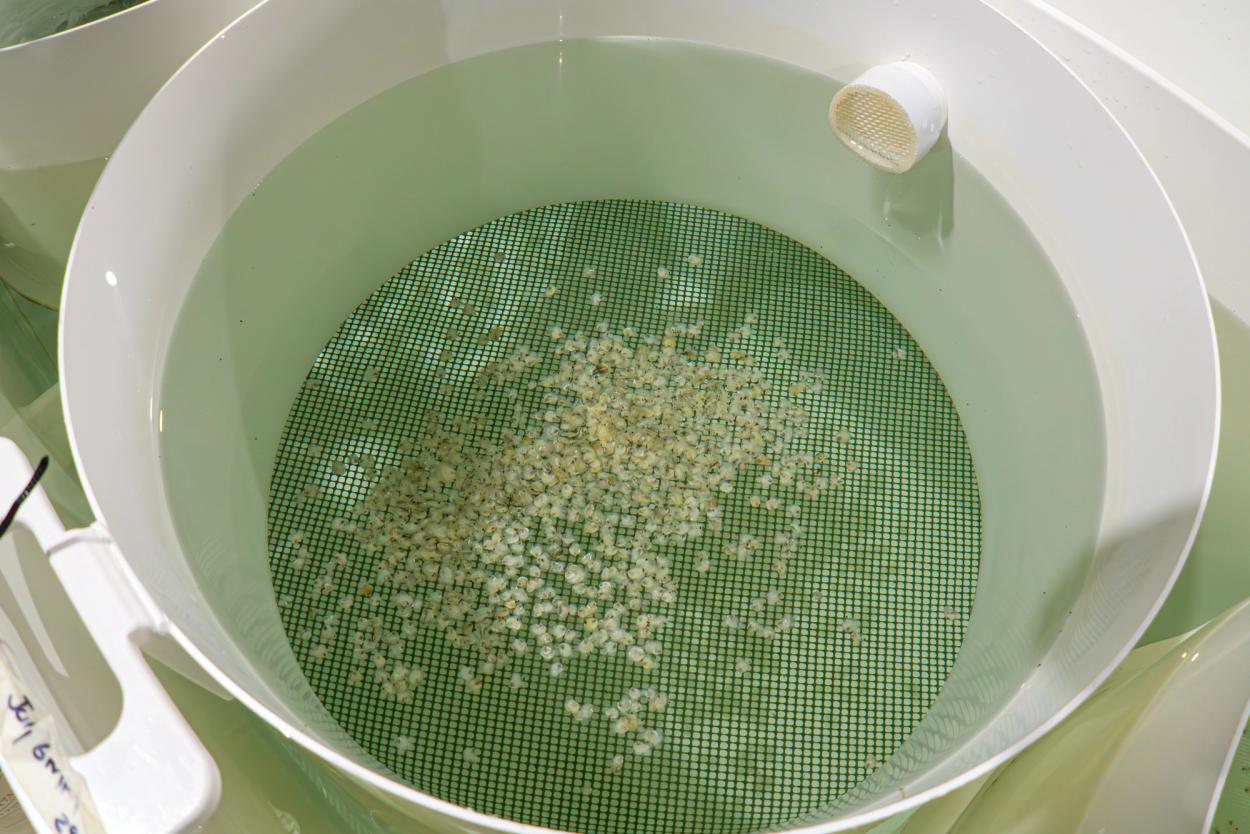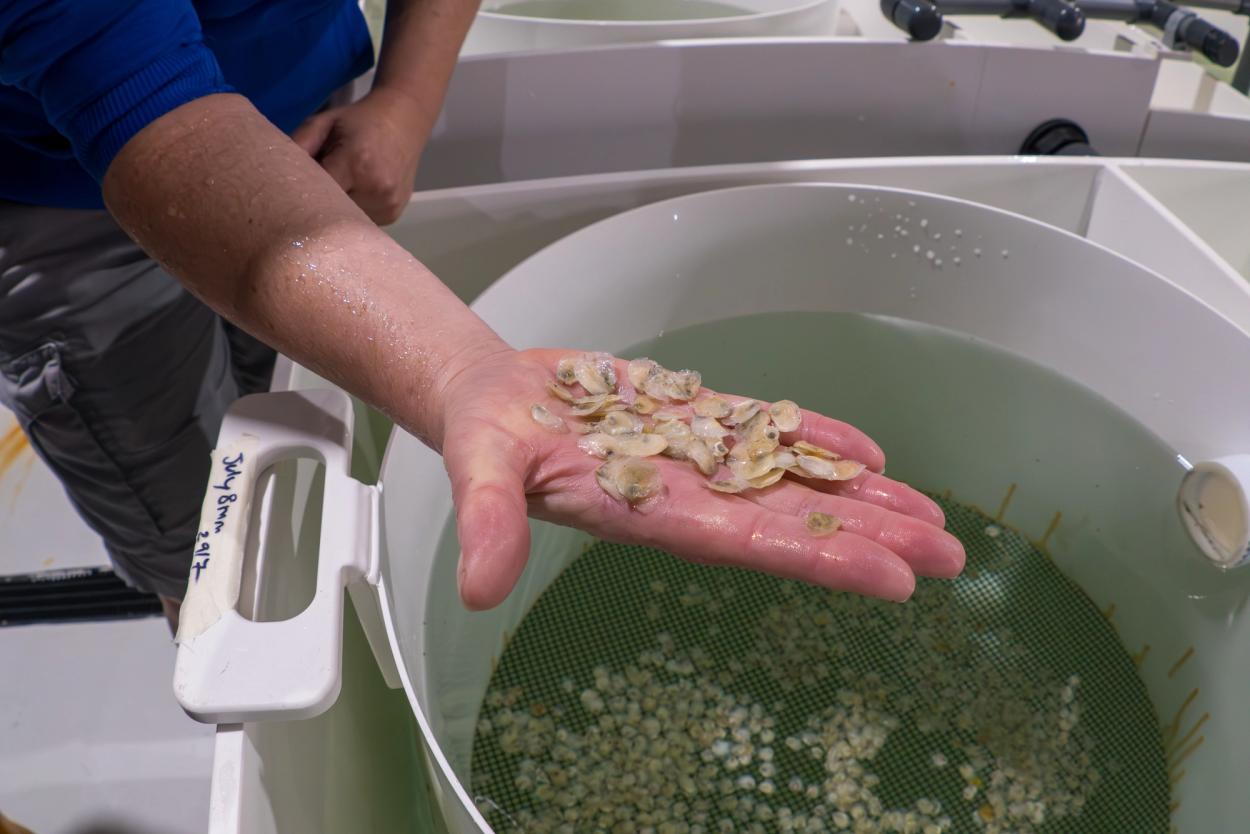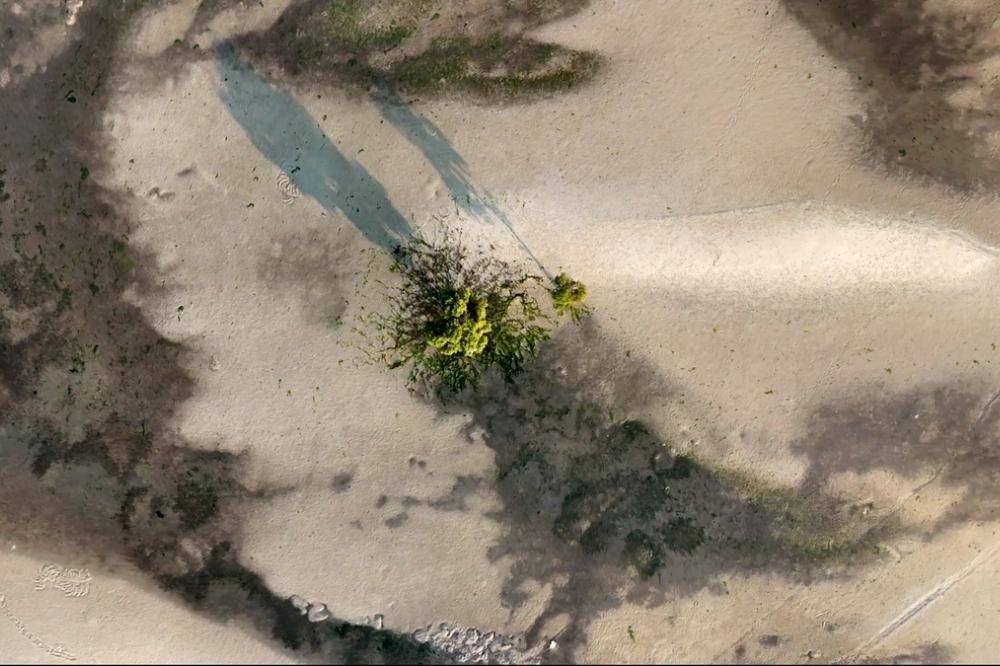How to hatch an oyster
Raising oysters to seed the world
Video: Lou Luddington
Native flat oyster reefs have become rare in the wild through overharvesting, pollution and disease. Growing interest in native oyster restoration has revealed a supply bottleneck that is limiting their revival across Europe. Rising to the challenge, one hatchery has upscaled and figured out how to rear millions of oysters ready to seed the world.
Many people's take on oysters is as a love food, slurped down with a chilled champagne or chablis on romantic occasions. Yet before they earned their cupid-wings they were widely eaten as a source of protein. As our appetite for them grew so did our efficiency at harvesting them to the point where, across the globe wild populations are close to extinction. Now the oysters you’re most likely to eat will be farmed and if you're in the UK, non-native Pacific oysters (Crassostrea gigas).
Wild native oyster reefs are among the most threatened marine habitats in Europe. In the UK the native European flat oyster (Ostrea edulis) has declined by 95% since the mid-19th century. With them a rich underwater habitat has been lost. In their undisturbed natural state, oysters form complex reef structures, where a huge variety of life including juvenile fish, crabs, sea snails, and sponges make their homes and take refuge.
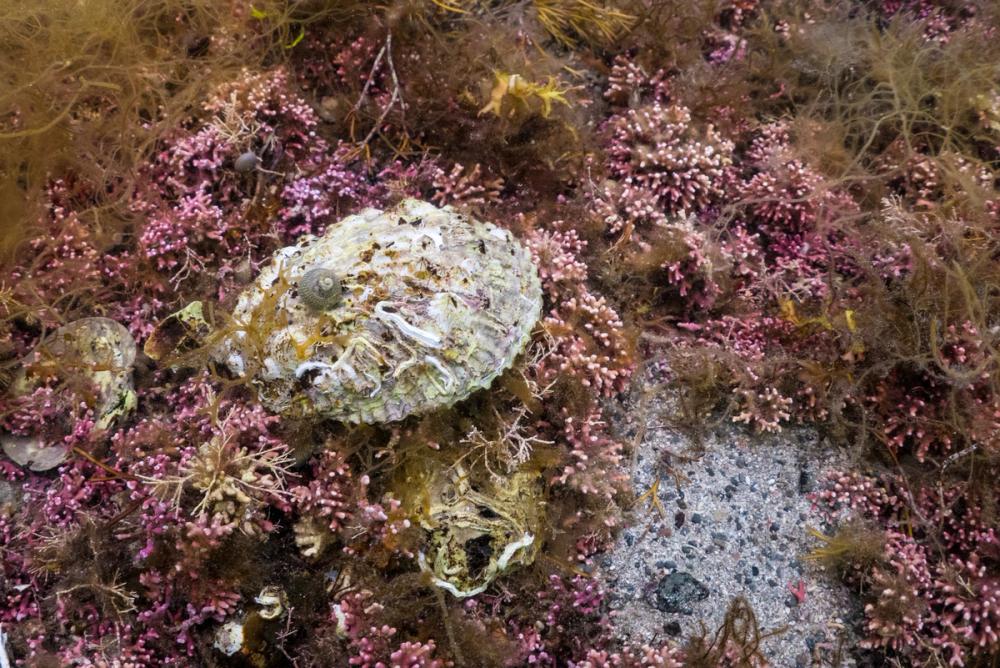
The European flat oyster (Ostrea edulis) is native to Europe and has long been a source of protein for humans. There is evidence that Stone Age hunter gatherers, as long ago as 8700 BC were harvesting oysters. © Lou Luddington
The fundamental ecosystem services these reefs provide—clean water, healthy fisheries, plentiful biodiversity—have been realised in recent years. This has prompted an upswell of interest in restoration and revealed a bottleneck that is limiting efforts. Supply of spat (young oysters) from hatcheries has not been able to keep up with demand.
But one company in the UK claims to have cracked it. Through an intensive few years of research and development they have honed their techniques and systems to produce young oysters on a scale that could halt the slide of wild Ostrea edulis towards extinction.
In the UK the native European flat oyster (Ostrea edulis) has declined by 95% since the mid-19th century.
Where have all the oysters gone?
Until the early 20th century, European flat oysters were sufficiently abundant to support a major commercial fishery across multiple European countries. Having a robust and evidenced historical baseline, both in terms of extent and condition of flat oyster habitats is essential for guiding restoration efforts and informing conservation policy. Prompted by this need, scientists embarked on a comprehensive study gathering together more than 1,600 records of oyster fisheries from 225 sources published over 350 years (Thurstan et al., 2024). Maps of the data show how flat oyster reefs once covered vast areas of the North Sea, Atlantic coast and other European coastal waters, including the Mediterranean region.
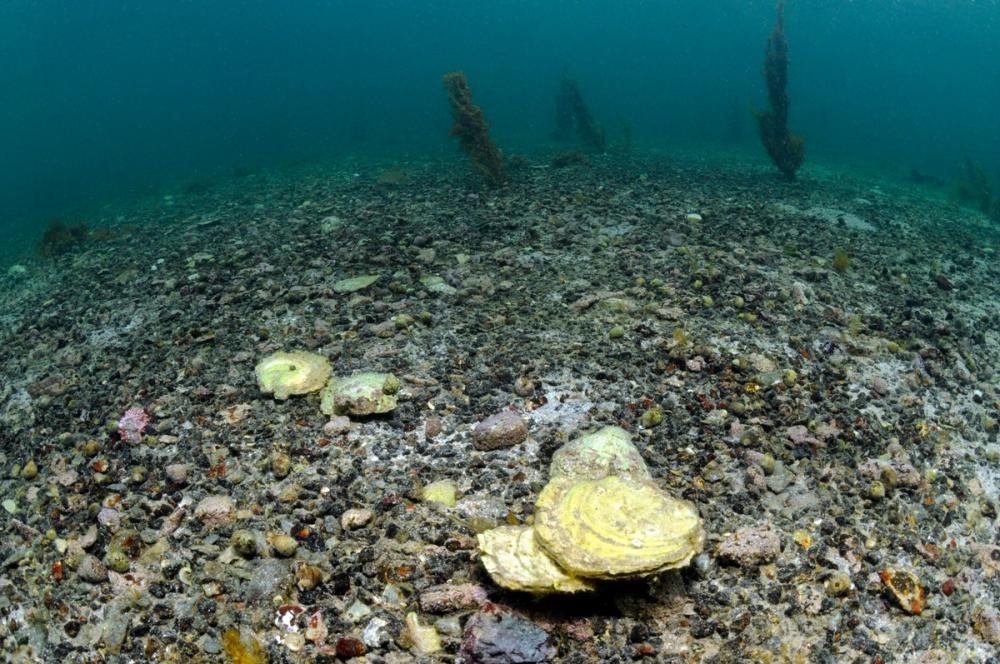
A handful of European flat oysters (Ostrea edulis) sit scattered across the seabed. This species used to form vast, stony reefs underwater all along European coasts. © Erling Svensen.
Over the past three centuries, these populations have suffered from intense dredging, declining water quality, and the appearance of bonamiosis in the 1970s, leading to their decline and eventual collapse. Caused by parasitic protozoans of the Bonamia genus, bonamiosis spread to Europe from the US, arriving in infected oysters introduced by the aquaculture industry. During the 1980s it caused catastrophic mortalities throughout the flat oysters range (Sas et al., 2020). More recently, Bonamia combined with the proliferation of various predators and many human-induced additional pressures have caused a dramatic decline in the last remaining flat oyster populations (Pouvreau et al., 2021). The flat oyster is now described as “functionally extinct due to human activity, across its full biogeographic range”. This means that although the species still exists in the wild, the population is so impoverished that it is no longer able to construct elaborate stony reefs from shells. The oysters' role as engineer has ceased.
Why does it matter?
As ecosystem engineers, oysters create three-dimensional reef structures that diversify the seabed. Living reefs crafted from their shells, bound together and assembled into craggy architectures bustling with life. 190 species from a broad sweep of organism types were found associated with flat oyster reefs. Among these were marine worms, crabs, lobsters and their allies, fishes, echinoderms, other shellfish, sponges and sea anemones, each finding refuge, a solid foothold or rich pickings as a foraging ground. Once a dominant feature of European coastlines, the loss of oysters represents a dereliction of the seabed, a transformative flattening out.
The current inability of wild flat oysters to build reefs means their restoration requires our intervention. Oyster restoration is not just about reviving a species or ecosystem. Over time, the recovery of oyster habitat has the potential to return ecosystem services, such as fish production, improved water quality, nutrient cycling, prevention of algal blooms, sediment stabilisation and possibly carbon sequestration. The last benefit is complex and unconfirmed due to oyster reefs being both a source and sink of carbon, the balance of which relies on a plethora of variables. Yet even without carbon sink benefits, overall the gains weigh deeply in favour of oyster restoration (Lee & Sanderson, 2020).
Once a dominant feature of European coastlines, the loss of oysters represents a dereliction of the seabed, a transformative flattening out.
Restoration: what’s the hold-up?
Since 2019, there has been a growing impetus to conserve and restore marine ecosystems at scale. This has included a surge in efforts to restore flat oyster reefs, pulling on a convergence of expertise from oyster devotees across Europe and the US. In the UK there are 11 projects working on restoring flat oyster populations to locations including Firth of Clyde, Conwy Bay, Loch Craignish and the Solent, all facilitated by the Native Oyster Network. Set up in 2017 to bring together academics, government, conservationists, businesses, oystermen and NGOs, who are working to restore self-sustaining populations of native oysters. This group produced the European Native Oyster Habitat Restoration Handbook (2020) to provide foundational and practical guidance on the restoration and conservation of flat oysters.
Similarly, within Europe the Native Oyster Restoration Alliance (NORA) was formed by partners from science, technology, nature conservation, consultancies, commercial producers and policy-makers to facilitate the restoration of native oyster habitat within its historic range in the North Sea and other European seas.
Studies by NORA (Pogoda et al., 2019) and the Native Oyster Network and others have identified that adequate spat supply is a limiting factor in European reef restoration. Despite there being various hatcheries, scale has proved to be a problem. For one hatchery tucked away in the far reaches of NW Scotland this served as a catalyst to intensify and upscale their efforts. The Oyster Restoration Company (TORC) has funded five years of research and development at a state-of-the-art aquaculture facility that is able to produce young oysters on a scale they believe is robust enough to recover self-sustaining populations of wild oysters. “We see profit as a means to revolutionise how restoration is done: by making it business-driven, we can decouple it from short-term political cycles and create self-sustaining systems for environmental repair. This shift is fundamental, and we believe it’s one of the most significant changes the sector can embrace if we’re to scale up impact globally,” says Nik Sachlikidis, CEO of TORC.
To produce oysters at scale you need to know what makes them thrive. At every stage of their life, they must be nourished with the best food and provided with optimum living conditions so they flourish. The team at TORC have become wellness experts for oysters but with scientific precision. Everything is measured, monitored, tweaked, refined, using technology and the wisdom and expertise of their human carers. With steady determination they have figured out how to keep their broodstock oysters happy and fruitful, and have learned what it is that sends an oyster larva joyously twirling towards the seabed and a contented transformation to adulthood.
How to hatch an oyster
What does a state-of-the-art oyster hatchery look like? And what does it take to schmooze an oyster into producing millions of larvae, and then foster those babies towards adulthood and a life in the wild? To find out I took a long drive up to the far reaches of northwest Scotland for a tour of TORC’s hatchery. I was welcomed by hatchery manager Anna Overweter, an easygoing Aussie who had migrated from her homeland to take on the intensive two year contract. Anna's entrance coincided with TORC’s move from Orkney to a bigger facility in Aultbea where they could increase production capacity to meet their target of 150 million oysters per year.
The first concern when I arrived was that I was clean and disease-free. More specifically, that I hadn’t visited other marine facilities where there might be risk of bonamiosis or other infectious oyster diseases. All visitors to the hatchery are asked to sign a biosecurity declaration as part of measures to keep the site disease free, a vital factor for successful restoration. Clean Wellie boots are provided on entry to each area of the hatchery and passage through is in a one-way direction to prevent the spread of bacteria to the cleanest parts of the facility.
Food, glorious … algae!
Oysters love to eat algae. Marine microalgae or phytoplankton to be precise. They feed by drawing surrounding seawater over their gills and labial palps (mouth and lips) and straining, sorting and selecting the edible algae. A single oyster is able to filter an estimated 100-200 litres of seawater every day. Compared to other filter-feeders, oysters are highly selective, rejecting all the particles whose physical and chemical characteristics do not suit their requirements. Size, flavour, density and ratio of different component algae matter to these discerning oysters.
The first room we enter at TORC is the algae lab. “This is where it all starts!” Anna tells me.
Brightly lit glass vessels holding different coloured water sit bubbling on a shelf, the mother stock of five core species of algae used to feed the oysters. Among them are the highly motile flagellates species that swim with whip-like ‘flagellae’ and diatoms like Skeletonema species that have elaborate silica skeletons. Being microscopic in size, the only indication they are present is the colour tint their photosynthetic pigments give to the water. Each has its own specific requirements in terms of pH, temperature and light to flourish. But they all need carbon dioxide/air, light, nutrients and movement to keep them circulating and they must be kept clean and free from bacterial infections.
Each stage of the oyster life cycle requires different types of algae to eat, at different densities and ratios. Just as our palates change as we grow and age, the oyster’s preferences change too. TORC pride themselves on being diverse in their ability to provide the growing oysters with the type of diet they need for their age. “Variety is key for young oysters,” Anna tells me. Each day small adjustments are made to the plant-based menu to suit the cravings of their picky diners.
Opposite the algae lab is a much bigger room housing a series of photobioreactor vessels. Clad in jackets of checker-plate metal, fronted by a digital monitor and sprouting pipes from every angle, this is where the algae are grown in bulk using the mother stock. Oyster fodder on an industrial scale.
Inside each bioreactor is an array of acrylic cone structures that allows light to penetrate to the centre of the vessel, providing all-round lighting. LED lights deliver different intensities and colour spectra to suit the algae species. Water piped in from the nearby loch is finely filtered and the pH balanced. Monitoring and adjustment of temperature, pH, light intensity, growth rate, relative algal densities, carbon dioxide and nutrients is automated to keep up with the changing needs of a growing algal culture. Anna says, “The bioreactors have all sorts of advanced automated settings. You can schedule harvesting and even jump on your phone and check they are okay before you go to bed. That drives everyone here crazy, but they do it anyway!”
When the algae are harvested to feed to the oysters, the remaining algae multiply to compensate. This shows an exponential rise in algae numbers—a soaring line on the graph of the electronic read out. Such growth signals a healthy algal colony. Maintaining optimum conditions for growth produces a dense soup of nutritious algae for the oysters to feast on.
The mother of all broodstocks
Flat oysters have a fluid, rhythmic sexuality. For the first two years they function as male, then alternate female and male stages for the rest of their life. The change of sex may happen two to three times during a single reproductive season depending on environmental conditions. There is no way of telling the sex of an oyster by eye so the ratio of male to females is a lottery when it comes to breeding.
With their genetically diverse stock of adult oysters TORC claims to have created the largest European native oyster broodstock library in the world. These are maintained in multiple rooms with conditions to suit the desired reproductive state. “When we want to prepare the adults to spawn we move them to our conditioning room to get them in the mood” Anna says.
Males broadcast their sperm into the water to fertilise eggs held inside the female’s shells. Females then brood the fertilised eggs for 7-10 days to allow the larvae to hatch which are then released into the water, birthing oyster-style.
“When we think they are close to releasing the larvae we move them to the spawning room and set up catch tanks”.
The tanks have sympathetic lighting, optimal temperature and a gentle flow of food-laden seawater. It's all laid on for these brooding, expectant oysters. “They are pretty happy here,” says Anna with an air of peaceful contentment, as she glances round at the oysters spread out in trays.
The larvae are harvested as the water flows through a fine-meshed net. Anna lifts out a net to reveal a teaspoon of sediment sieved from the water. Each grain is a tiny oyster swimmer destined for a rooted life. Deemed ready by their mothers to be popped out into the world for a short swim and a big adventure. “This is where it gets exciting and we move the larvae into our hatchery, where they are grown for another 10 days,” Anna enthuses.
Larvae
As larvae, oysters are highly mobile. They swim around eating ravenously. Magnified under a microscope the two halves of the shell are obvious. From between the gaping shells the diaphanous, double-lobed velum protrudes. Bristling with beating hairs called cilia, the velum propels them in a gliding, rotating dance, while whisking food into the mouth.
Between 12 and 20 days the veliger larvae develop an eye, and a foot much like a garden snail. They are now pediveligers and descend from the water column to the seabed. Instead of swimming they crawl in a feverish search for substrate to settle on.
Oyster settlement is known to be highly sporadic with many larvae never finding their forever home. Temperature, food availability, suitable settlement surface and predators all play their part. Oyster larvae are gregarious and like to settle on oyster shells or where other oysters have settled (Rodriguez-Perez et al., 2019). Hatcheries are able to control all of these variables to optimise settlement. By helping larvae through this tricky phase survival rates skyrocket.
Oyster settlement is known to be highly sporadic with many larvae never finding their forever home.
Spat
The larvae are given ground up oyster and scallop shells as a substrate. Shell fragments are tiny: the size of a pin point, as opposed to a pinhead. Using chemical cues the larvae home in on a surface. Once their spot is chosen they undergo metamorphosis (think caterpillar to butterfly) and transform into spat. The change is complete and irreversible, as they take their seat on the seabed.
Now they are miniature versions of the adult form, a shell of two halves (bivalve) fixed to the substrate by the lower valve. One scientist studying the behaviour of Ostrea edulis pediveliger larvae during attachment, described settling as “the consummatory act of cementing,” (Cranfield, 1973). This is a bond that will endure for the rest of the oysters life, an irreversible transformation of being in the world. From the nomadic, buoyant, eddying, sweep of the free-swimming larvae to the fixed and stony shells, resolute and unyielding to water’s flow. Swim time is fleeting, measured in days and is far exceeded by their sedentary life of 5-10 years.
The spat room at TORC houses a series of white plastic vats. The first is filled with pale green-tinged water with a handful of dark grains scattered across the bottom. As a drink you might imagine it tasting of lime cordial but in reality it would be salty with the tang of algae-laden pond water. With a quick glance at the dregs Anna exclaims, “I would say there’s around 80,000 spat in here. You want to see that they are dark dots. That means their guts are full.” These larvae are well-fed and thriving. Happy larvae, happy hatchery manager.
At this stage they are already miniature versions of the adult but we can’t make out their form with the naked eye at this size. By the time they get to half a centimetre it becomes obvious. Anna scoops out a handful for a closer look. Perfectly formed with intricate, paper-thin shells, I’m swept along with Anna’s reverence for these tiny sea sculptures. At double this size they are ready to restock wild populations in the Scottish sea lochs and beyond. Settled on large shell pieces and rock, spat of this size is produced as a reef-like structure known as Rapid Reef. This innovative approach is described as “a populated, thriving, native oyster reef in a bag”, which delivers large volumes of oysters at low cost and with minimal effort for oyster restoration projects.
The oyster’s world
The next time you crack open an oyster and slurp it down with a slug of your favourite white, consider that they too have discerning culinary tastes. Each is a living being with gills, lips, a mouth, and a tiny beating heart, all nestled within two-halves of a stony shell. They prefer the company of fellow oysters, cementing themselves together into three-dimensional reef structures that invite habitation by a huge diversity of other living beings. Their worth goes beyond that of a food item. Their service as water filters, bioengineers and facilitators of overall ocean health is far greater. With so few native oysters left in the wild, the return of oyster reef ecosystems requires our intervention.
Flooding suitable areas of seabed with millions of spat from TORC’s upscaled production may well be the answer. But the greatest challenge is not knowing how they will fare once released into a wild and changing ocean. The vision of hope is that with time and resilience, a thriving oyster population will build self-sustaining oyster reefs teeming with life.
Share this story
- Ocean of hope

